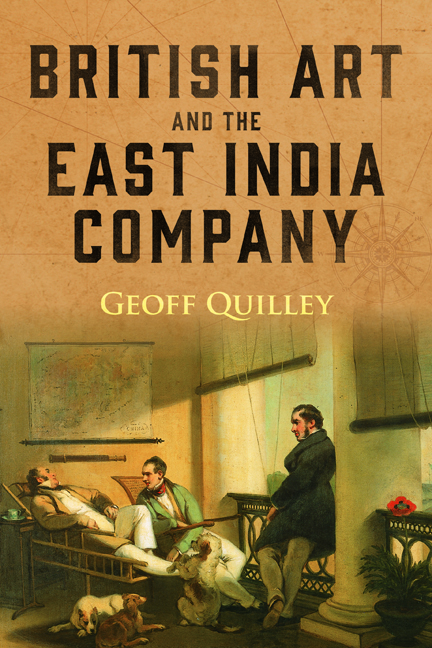Book contents
- Frontmatter
- Contents
- List of Illustrations
- Acknowledgements
- Chapter 1 Introduction: Corporate Patronage and Company Artists
- Chapter 2 ‘That Extensive Commerce’: the Maritime Image of the East India Company
- Chapter 3 Travels in India: Landscape and Colonial Patronage
- Chapter 4 Networks of Knowledge, Power and Cultural Exchange
- Chapter 5 The Cries of India: Colonial Power, Classification, and the Diffusion of Knowledge
- Chapter 6 By Way of China
- Chapter 7 Collecting India
- Chapter 8 Conclusion
- Select Bibliography
- Index
- Worlds of the East India Company
Chapter 6 - By Way of China
Published online by Cambridge University Press: 27 March 2021
- Frontmatter
- Contents
- List of Illustrations
- Acknowledgements
- Chapter 1 Introduction: Corporate Patronage and Company Artists
- Chapter 2 ‘That Extensive Commerce’: the Maritime Image of the East India Company
- Chapter 3 Travels in India: Landscape and Colonial Patronage
- Chapter 4 Networks of Knowledge, Power and Cultural Exchange
- Chapter 5 The Cries of India: Colonial Power, Classification, and the Diffusion of Knowledge
- Chapter 6 By Way of China
- Chapter 7 Collecting India
- Chapter 8 Conclusion
- Select Bibliography
- Index
- Worlds of the East India Company
Summary
Although modelling his system of governance on the crucial Mughal precedent of Akbar, a crucial aspect of Hastings's strategic policy – as we have already seen in the expeditions to Tibet – was to enable Company expansion eastward, in order to open up the Chinese market and gain access to the Chinese imperial court. As demonstrated by Alexander Dalrymple's compilations of charts for the Company of the seas south and east of the Bay of Bengal, the Company was bent on a sweeping expansion towards China from the 1770s and 1780s, attempting to secure navigational routes and examining islands such as Balambangan or Mindanao as potential bases for Company presence in the region. This increasingly intensive move eastwards culminated in the 1792 ambassadorial mission to China under Lord Macartney, himself former governor of Madras.
The principal impetus for the attraction to China was, of course, the tea trade, which from the 1780s was by far the most successful aspect of Company activity. With the reduction of duty on tea with the Commutation Act of 1784, the Company's sales of tea rose from £6 million to an average of £19 million, rising to almost £26 million by 1812. However, because of the notoriously closed system of commercial exchange imposed by the Chinese, in which European commerce was confined to a select group of Hong merchants based in the port of Canton, who regulated prices and conditions, the tea trade was widely seen as an unequal one, with tea being purchased for bullion, threatening a drain on British silver reserves to the profit of the Chinese empire. After 1784 the Company mitigated this through developing exports from Europe to China, and ‘also in exploiting a sort of Asian triangular trade, in which private British merchants based in India shipped Bombay raw cotton, Malayan tin or Bengal opium to be sold at Canton, the proceeds being invested in tea for London’; which reduced the amount of the Company's China purchases made in bullion to 15 per cent of the total. From the 1780s, increasing exports was the Company's policy towards improving its trade with China, and the single most important commodity through which it reversed the balance was opium, which over the following fifty years was pumped into the Chinese market, eventually causing a severe drain on China's own bullion reserves.
- Type
- Chapter
- Information
- British Art and the East India Company , pp. 243 - 272Publisher: Boydell & BrewerPrint publication year: 2020



